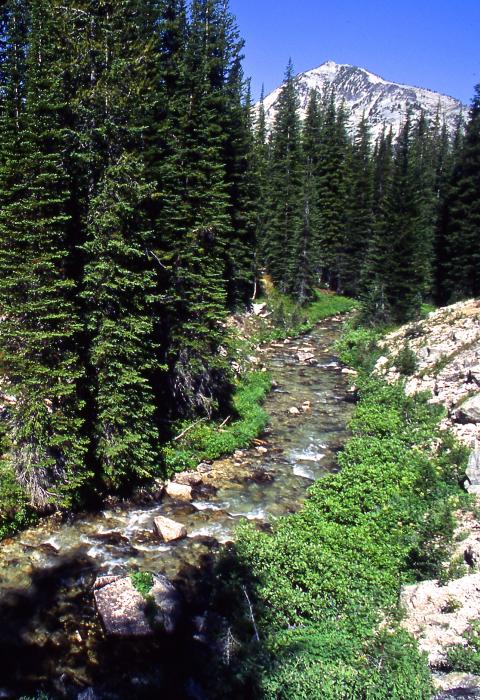Lostine River
Oregon
The Lostine River is located in northeast Oregon on the Wallowa-Whitman National Forest. Originating from Minam Lake in the Eagle Cap Wilderness, the river flows through a glaciated, U-shaped valley and is surrounded by mountain meadows and high mountain peaks. The upper five miles of the designated segment, within the wilderness, are classified as wild, and the lower 11 miles are classified as recreational.
Designated Reach
October 28, 1988. From its headwaters in the Eagle Cap Wilderness to the Wallowa-Whitman National Forest boundary.
Outstandingly Remarkable Values
Botany
The Lostine River corridor includes numerous Endangered Species Act and/or Oregon Endangered Species Act proposed, endangered, threatened, and sensitive species of plants. These include, but are not limited to, 11 species of moonwort and the northern twayblade. The rarity of finding so many moonwarts in one locality provides the opportunity for scientific research and a delight for botanists.
Fish
The Lostine River supports anadromous fisheries, such as spring chinook and summer steelhead, as well as several species of native and stocked trout, including bull trout. The river supports summer steelhead and spring and fall chinook which are both very important locally, regionally, and nationally; the spring and fall Snake River chinook salmon are listed as threatened under the Endangered Species Act. The clear, cold, highly oxygenated water of the Lostine River is important to the survival of these key species.
Recreation
The quality and diversity of recreational opportunities available along the Lostine River corridor makes it a very popular area. The Eagle Cap Wilderness and the Lostine Canyon draw visitors locally and from great distances outside the geographic region. The Lostine River corridor provides a combination of recreational activities including hunting, fishing, sightseeing, horseback riding, hiking, snowmobiling, and camping. Dispersed and developed camping are the dominant use along the river. Other recreation activities include picnicking, mushroom picking, photography, and skiing.
Visitors can access the river in a variety of ways. The Two Pan Trailhead provides the best hike along the upper section in the Eagle Cap Wilderness. Forest Service roads provide access to most segments below the wilderness boundary. Camping along the river is available at seven developed campgrounds and several dispersed campsites. Most of the day-use trailheads and campgrounds in the corridor are fee sites with on-site payment facilities.
Scenery
The Lostine River possesses much diversity in landform, water, color, and vegetation. The headwaters of the Lostine River are located in the spectacular high country of the Wallowa Mountains. Here, the river meanders through lush meadows surrounded by steep, craggy, granitic peaks. Further down, a forest environment of mixed conifer is dominant. The Lostine River has beautiful deep, clear, blue pools as well as stretches of swift water, crashing over and skirting around large rocks.
Wildlife
The diversity and importance of the habitat in the Lostine River corridor supports a diversity of wildlife habitats and species, including Rocky Mountain elk, deer, black bear, wolf, mountain lion, beaver, otter, mink, and other small mammals. Rocky Mountain bighorn sheep, indigenous to the Eagle Cap Wilderness, have been reintroduced in the Hurricane Creek-Lostine River drainage. Peregrine falcons, bald eagles, and a large variety of other birds inhabit the area.
The number of federally listed threatened, endangered, and sensitive species sighted or which are known to inhabit the Lostine River corridor makes it an important ecosystem. The efforts in reintroducing bighorn sheep and introducing mountain goats in the Hurricane-Lostine divide are notable in this geographic region.

